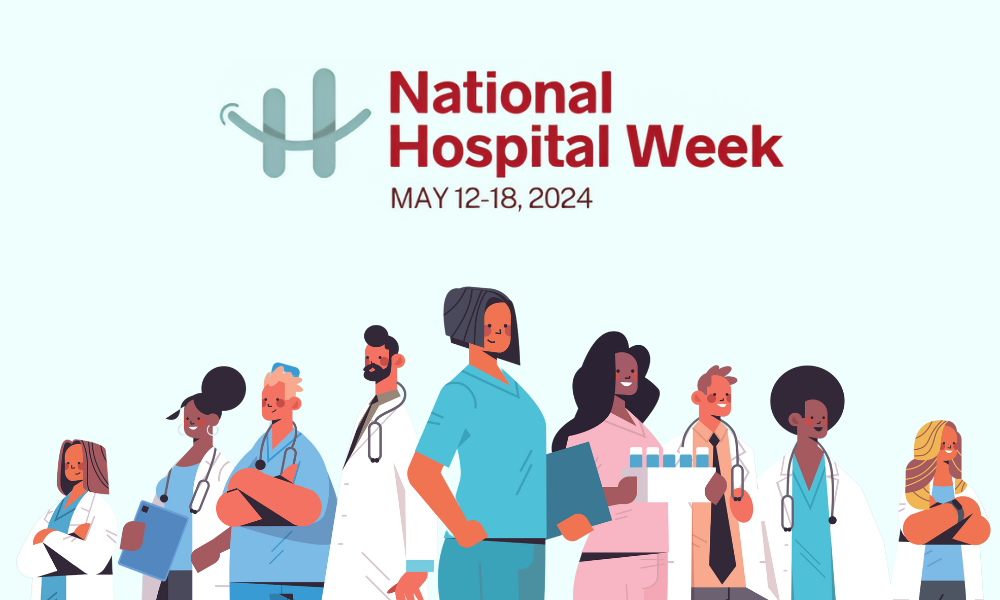Locums CME is a bi-weekly roundup of recent news that matters to locum tenens providers. Stay in the loop on what’s new in the locums industry, and make the most of the locum tenens lifestyle with our fresh finds.
Post-Pandemic Perspectives: The Growing Demand for Locum Tenens
(From Becker’s Hospital Review, 6/20/23)
Locum tenens can help healthcare organizations during stressful times when they need to be agile and adaptable, and health systems have known what locum tenens providers were capable of for decades. Still, the COVID-19 pandemic reinforced how critically needed locum tenens providers were as hospitals turned to physicians and advanced practice practitioners (APP) to meet the demand for patient care.
The pandemic also showed how locums could be flexible and help providers navigate dynamic markets, which makes them an attractive alternative to the traditional route of most medical professionals.
In a recent interview with Becker’s Hospital Review, Anne Anderson, an executive VP at Jackson + Coker and locum tenens expert, spoke about the unique opportunities these positions offered physicians and APPs at every career stage. Anderson said despite financial pressure to cut expenses, hospitals recognize the ongoing high demand for patient care and have seen how locum tenens staffs help meet this need, reduce surgical backlogs, care for chronic conditions, and alleviate provider burnout.
Anderson said healthcare systems should see physicians as revenue sources, not cost centers. So healthcare leaders need to consider the cost of not hiring locum tenens providers. Before locum tenens, physicians were considered less qualified or skilled than permanent staff. Their rigorous credentialing and screening process puts them on par with full-time providers.
Locum tenens assignments help give providers control over their careers and allow everyone from recent grads to providers approaching retirement to work in different communities and organizations while paying off medical school debt.
Countless opportunities exist to work locum tenens, including governmental agencies, correctional facilities, and cruise lines. The demand is growing, and providers who want flexibility and unique work opportunities in their medical careers are ideal candidates to try out locums.
Your Locums Prescription
(From The Wall Street Journal, 6/6/23)
Earlier this month, The Wall Street Journal profiled three locum tenens providers who turned to locums instead of the “more traditional” medical career path. The coverage further reinforces locum tenens as a viable career opportunity for providers and a solution to burnout and staff shortages in healthcare.
The WSJ piece profiled three physicians who had chosen to work part-time medical gigs as a full-time career option. The WSJ highlights a shift in mindset for physicians from full-time work to a temporary-gig mentality. The transition has been a long time coming, with providers being subjected to overloaded work schedules, burnout, and a lack of work-life balance.
A survey from earlier this year revealed most physicians described themselves as burned out, which sparked this transition out of traditional medical careers. The national exposure from WSJ helps amplify the message that locum tenens is an excellent career option for physicians looking for a change.
Locum tenens assignments offer opportunities for physicians to regain balance and focus on providing the best possible patient care. Around 50,000 doctors, or about 7% of the US physician workforce, practice medicine through temporary assignments, and the demand for temporary physicians is growing. Doctors who have switched to temporary work say their patients benefit from a physician who can focus solely on providing care.
(From Hayes Locums, 6/6/23)
If locum tenens seems too good to be true or too much of a hassle, this article from Hayes Locums can help highlight why now is a great time to consider locum tenens as a career.
Despite hospitals’ increasing reliance on locum tenens, certain misconceptions about its drawbacks still exist. Here are seven common locum tenens myths and the answers debunking them that have led more doctors to come around to the benefits of locum tenens.
MYTH #1: Locum tenens is only for doctors interested in travel.
Truth: Locums can be great for travel, but locum tenens physicians can also find local opportunities.
MYTH #2: Locum tenens is unpredictable, and I can’t turn this into a full-time career.
Truth: There’s a growing demand for locum tenens physicians. It’s possible to turn locum tenens to turn it into a full-time career, and many doctors have elected to try this over the traditional medical path.
MYTH #3: Locums won’t look good on your CV.
Truth: Locum tenens assignments can enhance a CV for future employers.
MYTH #4: Locum tenens involves too much paperwork.
Truth: Working with a locums agency handles the credentialing and paperwork problems. Agencies can handle the work for you, so you can just sit back and focus on providing care.
MYTH #5: Locum tenens doctors lack experience.
Truth: Locums physicians have experience working in many diverse environments.
MYTH #6: Locums only work for doctors at specific stages of their careers.
Truth: It doesn’t matter what stage you are in your career — from residency to near retirement — locum tenens can help you find the work-life balance you crave.
MYTH #7: Locum tenens doesn’t allow you to connect with patients.
Truth: Locum tenens providers can spend even more time with patients because they won’t be busy handling administrative work.
Locum tenens assignments let doctors focus on caring for patients who need it without dealing with the stress and headaches of administrative tasks or office politics. Now that the myths above have been debunked, there’s no reason to let them prevent providers from taking the plunge into locums.
(From Integrity Locums, 6/12/23)
The right locum tenens assignment can lead to a fulfilling and successful career experience for all providers and facilities. Locum tenens work is dynamic and flexible, and it allows providers to work in various settings and locations all over the world. But there are several factors you need to consider before jumping into an assignment.
Factor 1: The Length of Assignment
When looking for the perfect locum tenens career fit, providers should first consider the length of the assignment, which can vary from weekend assignments to vacation coverage or ongoing assignments. Weekend or vacation assignments allow providers to supplement their regular practice, while ongoing assignments offer more stability and a chance to build lasting professional connections in a healthcare facility.
Hybrid assignments include the best of both worlds by allowing providers to do both. A provider’s assignment starts with specific dates and limited times at a facility but then moves to an ongoing basis. The arrangement can give providers a balance of structure and flexibility.
Factor 2: A Schedule to Suit Your Needs
Different schedule options are available for locum tenens providers, such as call coverage assignments, day shifts, night shifts, and seven-on, seven-off schedules. Each schedule option has its benefits and considerations, allowing healthcare professionals to choose what suits their preferences and lifestyle.
Factor 3: Desired Level of Supervision
The level of supervisory responsibilities varies depending on each facility’s policies. Some assignments offer greater autonomy, allowing physicians to manage patient care independently.
Working locum tenens offers the chance to experience medicine in a different healthcare environment. Providers encounter various medical conditions each day and diverse patient populations. Locum tenens exposes so many providers to unique opportunities to broaden their skillset.
(From All Star Healthcare Solutions, 6/12/23)
Before making any job offer to a provider, a healthcare organization will request a sit-down interview. The interview experience can be stressful, but it also allows organizations to peel back the layers and look at a candidate beyond the list of qualifications on a CV.
The experience should go both ways. Before the interview, candidates collect as much information as possible, which helps ease their minds before heading into an interview. But another thing they can do is jot down a few questions for their potential employers, which allows candidates to 1.) show employers they’ve done their research and are genuinely interested and 2.) answer some important questions that might not have readily available answers.
All Star Healthcare Solutions shared these prompts for candidates who are unsure of what to ask during an interview, including:
Locum tenens-specific questions:
- Why is the position open?
- Has the facility previously used locum tenens professionals?
- What type of staff support is accessible, including specialty consultants and advanced practice providers?
Direct-hire questions:
- What are the short-term plans for the facility (i.e., adding units, expanding specialty coverage)?
- Will my responsibilities change within a year or two?
- What formal (and informal) professional development programs are available?
- Are there any restrictions on provider moonlighting?
Additional workplace culture questions:
- How would you describe the management style of the organization and the unit?
- What type of wellness programs are offered to staff?
- What is your favorite part of working at this facility and living in this community?
These interviews are a prime opportunity for physicians and advanced practice practitioners to speak directly to hiring managers. Providers can take these questions to their next interview and use them as a base to generate conversation and help decide if a potential new workplace meets their expectations.
Physician Wellness Retreat
(From The American Medical Association, 6/16/23)
Physicians Dr. Meredith Faggen, medical director, Oncology at Dana-Farber Brigham Cancer Center, and Dr. Lauren Peccoralo, senior associate dean at Icahn School of Medicine at Mount Sinai, were featured recently in an article by the American Medical Association (AMA) on how physician burnout varies by specialty, gender and sexual orientation, with certain groups having an even higher prevalence of burnout.

Dr. Faggen said that earlier in her career, she missed a chance to become a partner in a private practice because she didn’t work enough months in the year due to her maternity leave. This experience was an example she gave of the scenarios that affect physicians’ burnout.

Dr. Faggen also addresses the unique emotional toll of working in oncology, where physicians must balance empathy and compassion with the need to separate themselves emotionally from their patients. To address these challenges, Dr. Faggen initiated a pilot program that organizes weekly team meetings with a social worker, providing a space for employees to share memories about recently deceased patients. Whether it’s a funny quote or a sweet story, the goal is to help health professionals acknowledge their feelings.
The AMA is working with doctors to provide resources to prioritize well-being and reduce physician burnout, which has become a threat to the US healthcare system. AMA’s resources highlight workflow changes that allow physicians to focus on patient care. Dr. Faggen and Dr. Peccoralo stress the significance of recognizing physicians’ mental health because the healthcare system can’t ignore substance-use disorders, depression, and the suicide rate among physicians anymore.
(From Psychiatry Advisory, 6/15/2023)
Burnout is a widespread problem in the healthcare industry that long predates COVID-19 — though the pandemic only made things worse. Health systems nationwide are concentrating on boosting employee morale to keep clinicians from quitting, retiring early, or even worse.
While burnout has contributed to significant employee shortages in the healthcare industry, what’s at stake here is far worse than workforce shortages. Rates of physician suicide, fueled in part by burnout, have been a concern for decades. And while that’s a concern for all specialties, it’s hit primary care physicians particularly hard, with some studies showing that physicians like pediatricians and family practice physicians run a higher risk of burnout than others.
Doctors have expressed continued frustration over the demands imposed by hospital administrators and insurance companies and the grueling shifts assigned to medical residents. There has long been this culture within the healthcare industry that discouraged physicians from prioritizing their mental health and forced them to bear the emotional burdens of their work silently. The culture around this must change if we ever want to address the burnout crisis effectively.
The growing burnout problem exacerbates primary care physician workforce shortages, and the projected shortage of primary care physicians by 2034 could limit patients’ access to primary care. In addition to burnout and stress, high levels of student debt and the bureaucratic burdens of practicing medicine contribute to early retirement from the medical profession.
Organizations are addressing burnout by providing physicians with psychological and emotional support programs — The American Medical Association (AMA) is working to develop resources to prioritize well-being and highlight workflow changes so physicians can focus on patient care.
Fixing the burnout problem in the healthcare space will require significant culture changes to ensure the well-being of our doctors. Ultimately, the healthcare industry needs to prioritize mental health and well-being for its providers to avoid the potentially devastating consequences of physician burnout.
(The Coalition for Physician Well-Being, 6/20/23)
One of the best ways for a physician to combat burnout is to go away on a personal vacation for a few days. If you want to experience the fresh air of the Wasatch Mountains, zip lines, and miles of scenic hiking and mountain biking trails, The Coalition for Physician Well-Being has a conference that piques your interest.
The Coalition’s annual Joy & Wholeness Summit conference, designed to address physician well-being and combat burnout, takes place from July 10-12 at the Grand Summit Resort in Park City, Utah.
The conference aims to supply providers with tools and resources to enhance their well-being. In attendance this year will be speakers to discuss topics such as business and quality, culture, resilience, and learning. Conference attendees will have ample opportunities to network, share their personal experiences combatting burnout, and learn new methods from others.
Registration is open for the event. Check out the Coalition website for more information on the event.
Socially Speaking
From LinkedIn
From Facebook
From Twitter
Doctor’s Notes
(From Medical Economics, 6/12/23)
Healthcare consolidation is making it difficult for physicians to remain independent. But Congress can initiate specific measures that would make things easier for independent physicians, according to The American Academy of Family Physicians (AAFP).
The Senate Finance Committee recently addressed consumer confusion, consolidation among insurance companies, pharmacies, and health systems, and the impact of private equity investments. The AAFP suggested several reforms to support independent practices, including forgiving student loans for primary care physicians, changing fee-for-service payment systems, and raising Medicaid payment rates.
The US healthcare spending in 2021 increased to $4.3 trillion, and experts say that the consolidation of providers leads to higher prices and reduced access to care, resulting in increased insurance premiums and out-of-pocket costs for consumers.
There is now a need for a modernized data system to measure ownership, costs, quality, and access to healthcare. Analysts emphasized the importance of shifting a payment model toward population health and the need for more independent, community-owned hospitals focusing on patient well-being and lowering consumer costs.
Another crucial aspect discussed in front of Congress was the necessity for more usable data, including price transparency, to improve the affordability and accessibility of healthcare. There’s reportedly been a lack of compliance with federal rules to disclose the prices of services, according to Caroline Pearson, executive director of the nonprofit Peterson Center on Healthcare. The data available, even in its imperfect form, has the potential to identify poorly functioning markets, help address consolidation-driven price increases, and ultimately reduce costs for consumers.
(From The American Medical Association, 6/12/23)
The American Medical Association (AMA) has long advocated for Medicare physician payment reform, saying the current system is “unsustainable.” Temporary patches and cuts to the Medicare payment system have put physician practices and patient access to care at risk.
Payment cuts, freezes, and redistributions have exacerbated the challenge. When adjusted for inflation, Medicare physician payment has effectively declined 26% from 2001 to 2023. Congress and the AMA still need to prioritize fixing the root of the problem, which is the payment system itself. The AMA is urging leaders in Washington to work with the physician community on immediate and long-term solutions to reform the Medicare payment model.
The House of Delegates adopted new policies for the AMA to:
- Declare Medicare physician payment reform as an urgent advocacy and legislative priority.
- Prioritize significant increases in funding for federal and state advocacy budgets specifically allocated to achieve Medicare physician payment reform.
- Have its Board of Trustees report back to the House of Delegates at each annual and interim meeting on the progress in achieving Medicare payment reform.
The AMA will monitor progress and report back on achieving payment reform. The association plans to engage patients and physicians through a national media strategy to promote Medicare physician payment reform.
The AMA outlined essential principles for reform in collaboration with other physicians and healthcare organizations. These principles include an annual inflationary update to put the healthcare system on a sustainable financial footing. Congress has already introduced a bill to provide updates based on the Medicare Economic Index, which is crucial for maintaining access to quality care for the 65 million older Americans covered by Medicare.
As a medical organization, the AMA is committed to driving significant reforms to the Medicare physician payment system and is urging Congress to prioritize systemic changes to benefit physicians and patients alike.
(From Medical Economics, 6/19/2023)
A primary care physician (PCP) is pivotal in the healthcare ecosystem. Think of your PCP as the quarterback of a patient’s care. The PCP is the central point of contact between patients and their specialists, their pharmacy, and for specific treatments they receive. A PCP needs all the help they can get, and mobile phone applications being introduced can help PCPs better communicate the best treatment to their patients.
The use of apps in healthcare has seen significant growth because of how convenient they are for patients and providers to use. These apps help improve communication between patients and healthcare providers and help patients manage care for complicated conditions.
For example, PCPs face challenges managing complex autoimmune conditions, and there is often fragmented data across different providers. Integrating specialized apps can account for disease-specific parameters. It can help patients and doctors with symptom tracking and give doctors a place to inject personalized care plans for patients.
Technology helps doctors prioritize patient needs. Providers have taken significant steps toward making communication simple, easy, and effective. For example, researchers have argued that emojis can bypass communication barriers with patients, and more and more doctors are finding ways to implement these to replace language that can be hard for some patients to understand.
Leveraging the power of new technology, physicians can prioritize patient needs, manage conditions, and provide a more personalized healthcare experience for all patients.








